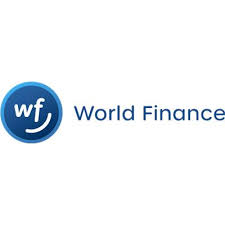In an era marked by globalization and interconnected economies, understanding the intricacies of world finance is crucial for individuals, businesses, and policymakers alike. From the fluctuations of exchange rates to the impact of geopolitical events on financial markets, the world of finance is dynamic and ever-evolving. In this comprehensive guide, we will delve into key aspects of global finance, providing insights and analysis to help you navigate this complex landscape.
I. The Global Economy: A Macroscopic View
A. Economic Indicators
- Gross Domestic Product (GDP): The primary measure of a country’s economic health.
- Unemployment Rates: A key indicator reflecting the labor market’s condition.
- Inflation Rates: The rate at which the general level of prices for goods and services rises.
B. Globalization and Interconnectedness
- Trade and Capital Flows: How international trade impacts economic growth and stability.
- Multinational Corporations: The role of global corporations in shaping the world economy.
- Economic Alliances and Agreements: The impact of organizations like the World Trade Organization (WTO) on global trade.
II. Financial Markets: The Heart of Global Finance
A. Stock Markets
- Major Stock Exchanges: NYSE, NASDAQ, and other key players.
- Stock Indices: Understanding benchmarks like the S&P 500 and Dow Jones Industrial Average.
- Market Trends: Bull and bear markets, and their implications for investors.
B. Foreign Exchange (Forex) Market
- Currency Exchange Rates: Factors influencing currency values.
- Forex Trading Strategies: Analyzing trends and making informed decisions.
- Central Banks and Monetary Policy: The role of central banks in shaping currency values.
C. Bond Markets
- Government Bonds vs. Corporate Bonds: Understanding the key differences.
- Bond Ratings: The significance of credit ratings in assessing risk.
- Yield Curves: Interpreting yield curve movements and their implications.
III. Financial Instruments and Investment Strategies
A. Derivatives
- Options and Futures: Understanding these complex financial instruments.
- Hedging Strategies: Mitigating risk through derivative instruments.
- Derivatives and Speculation: Balancing risk and reward.
B. Investment Vehicles
- Mutual Funds and Exchange-Traded Funds (ETFs): Diversification through pooled funds.
- Hedge Funds: Strategies and risks associated with hedge fund investments.
- Real Estate Investment: The role of real estate in a diversified portfolio.
IV. Challenges and Risks in World Finance
A. Geopolitical Risks
- Trade Wars: The impact of trade tensions on global markets.
- Political Instability: How political events can create financial uncertainty.
- Economic Sanctions: Their effects on targeted countries and the global economy.
B. Technological Disruptions
- Fintech Innovations: The transformative impact of technology on traditional finance.
- Cybersecurity Threats: Protecting financial systems from cyber attacks.
- Digital Currencies: Exploring the rise of cryptocurrencies and their implications.
Conclusion
In conclusion, navigating the world of finance requires a comprehensive understanding of the global economy, financial markets, and investment strategies. As we continue to witness rapid changes in the financial landscape, staying informed and adapting to new developments is key. By grasping the fundamentals outlined in this guide, individuals and businesses can make informed decisions, manage risks, and thrive in the dynamic world of global finance. Stay tuned for more insights into the ever-evolving realm of world finance.

